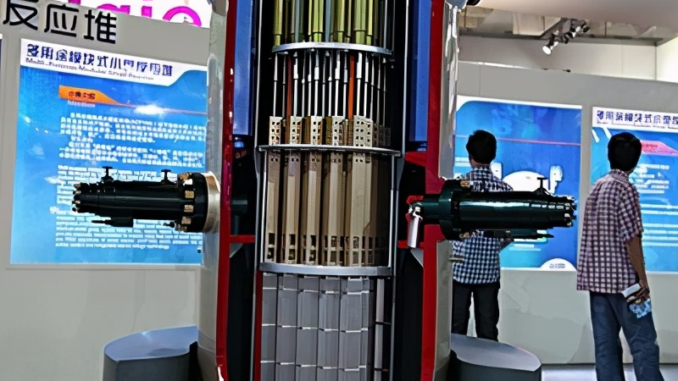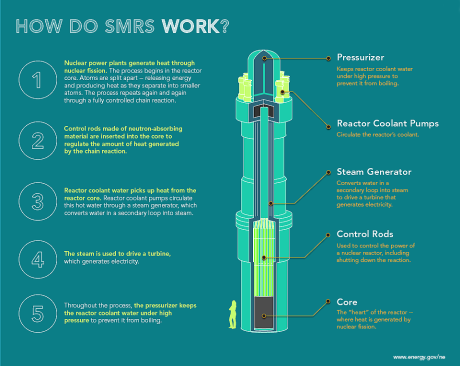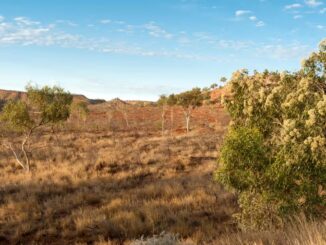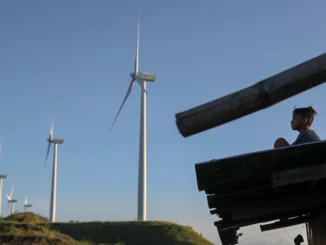
September 5, 2022 by stopthesethings 3 Comments
With Europe’s renewable energy disaster laid bare for all to see, the focus is now on “real energy” – power that’s available 24 x 7, irrespective of the weather and where the Sun sits in the sky.
For fairly obvious reasons, the Small Modular Reactor has captured the imagination of power-starved Europeans, with two key contenders vying for a slice of what will be a very healthy market.
Britain’s Rolls-Royce is well ahead of the curve, with a 470MW unit almost ready to roll.
In the US, NuScale, based in Oregon, has cleared all of the regulatory hurdles and is ready to deliver 924MW reactors to those with the wit and temerity to acquire them.

The wind and solar cult run the line that SMRs are a pipe dream, cooked up by conservative reactionaries, which menas they’re bound to ignore the 200 small nuclear reactors presently powering 160 ships and submarines all around the world, and which have been for decades; the USS Nautilus set sail and submerged in 1955, forever changing the model for naval propulsion.
Much to the horror of the cult, NuScale and Rolls-Royce are fast turning a purported pipe dream into solid reality, as The Australian’s Adam Creighton reports.
Australia could go nuclear before 2030 and bring down power prices with US small reactors The Australian Adam Creighton30 August 2022
Australia could have competitively priced electricity generated by nuclear power well before 2030 after the US government approved the first small modular nuclear reactor for commercial use.
The business behind the small-scale reactor, Oregon-based NuScale – has told The Australian the reactors could supply about two-thirds of the capacity of the soon-to-close Liddell coal-fired power station and power nearly 700,000 homes as early as 2027.
As nuclear power becomes a more attractive option to developed countries around the world looking to cut carbon emissions and deal with the energy crisis caused by the Russia-Ukraine war, Prime Minister Anthony Albanese is coming under more pressure to reconsider Labor’s decades-old ban on nuclear power.
NuScale chief executive John Hopkins said on Sunday that his small reactors could be based in remote locations with little access to the power grid – including near mines in need of generation – and provide up to 924 megawatts of electricity.
“As the first and only SMR to have received approval from the US Nuclear Regulatory Commission, we are now focused and reaching incredible milestones in supply chain readiness,” he told The Australian, referring to the NRC’s certification of NuScale’s reactor design in late July, after a six-year review. “Our SMR technology is smaller and simpler, resulting in lower costs and a shorter nuclear construction period of less than 36 months.”
SMRs lent themselves particularly to use in “remote locations, such as mining operations in Australia, where there is little or no access to the main power grid”.
Nuclear power generated about 10 per cent of the world’s total electricity supply in 2021 (19 per cent in the US, from 55 power plants in 28 states).
“Nuclear power has a unique opportunity to stage a comeback,” International Energy Agency director Fatih Birol said in June, amid reports Germany, Belgium, Japan and other nations were considering extending the life of ageing nuclear power plants or building more.
NuScale’s 12-module plant, assuming installation at a generic greenfield site, could supply electricity at US$41/Mwh to US$65/MWh, cheaper than solar power once the cost of batteries were included, the company estimated.
“The costs of solar do not fully account for bringing power to consumers 24/7, and this is where advanced nuclear technology can come in to support renewables and offer an opportunity for Australia to truly decarbonise,” Mr Hopkins told The Australian.
NuScale said it had signed 19 agreements in 12 countries, including Canada, Romania, Czech Republic and the UK, to supply SMRs, pending relevant local regulatory approvals.
“Achieving global climate goals simply cannot be done without timely solutions like NuScale’s SMRs as a part of the equation,” Mr Hopkins said.
Traditional, large-scale nuclear reactors have been plagued by cost blowouts and construction delays; the UK’s 3200MW Hinkley Point C nuclear power plant will be a decade late and cost more than £27bn by the time it becomes operational in 2027.
The Coalition – including Opposition Leader Peter Dutton – has ramped up calls for Australia to consider nuclear energy in the weeks after the May election.
But Climate Change Minister Chris Bowen in June ruled out any move to allow nuclear power in Australia, which is the only G20 nation with a legislative ban on nuclear energy. The government has legislated to reduce carbon dioxide emissions by 43 per cent on 2005 levels by 2030.
Rolls-Royce’s SMR division CEO Tom Samson said his company, which was aiming to have a 470MW SMR online in the UK by 2029, wanted to “explore how Australia could use our technology to reduce its reliance on hydrocarbons and achieve its net-zero aspirations”.
“Australia is already one of the world’s leading exporters of uranium for nuclear fuel and has huge potential for deploying the Rolls-Royce SMR nuclear power plant as a way to decarbonise industry and the electricity grid by providing affordable, low-carbon electricity from a sustainable source,” he told The Australian.
The surge in gas prices since Russia’s invasion of Ukraine in February has undermined the case for solar and wind power, at least temporarily, which rely on gas-fired power to meet demand when the weather isn’t conducive to power generation.
Elon Musk, one of the world’s richest men and CEO of electric car maker Tesla, last week urged governments to “increase nuclear power generation”. “It is insane from a national security standpoint and bad for the environment to shut them down,” he said.The Australian



